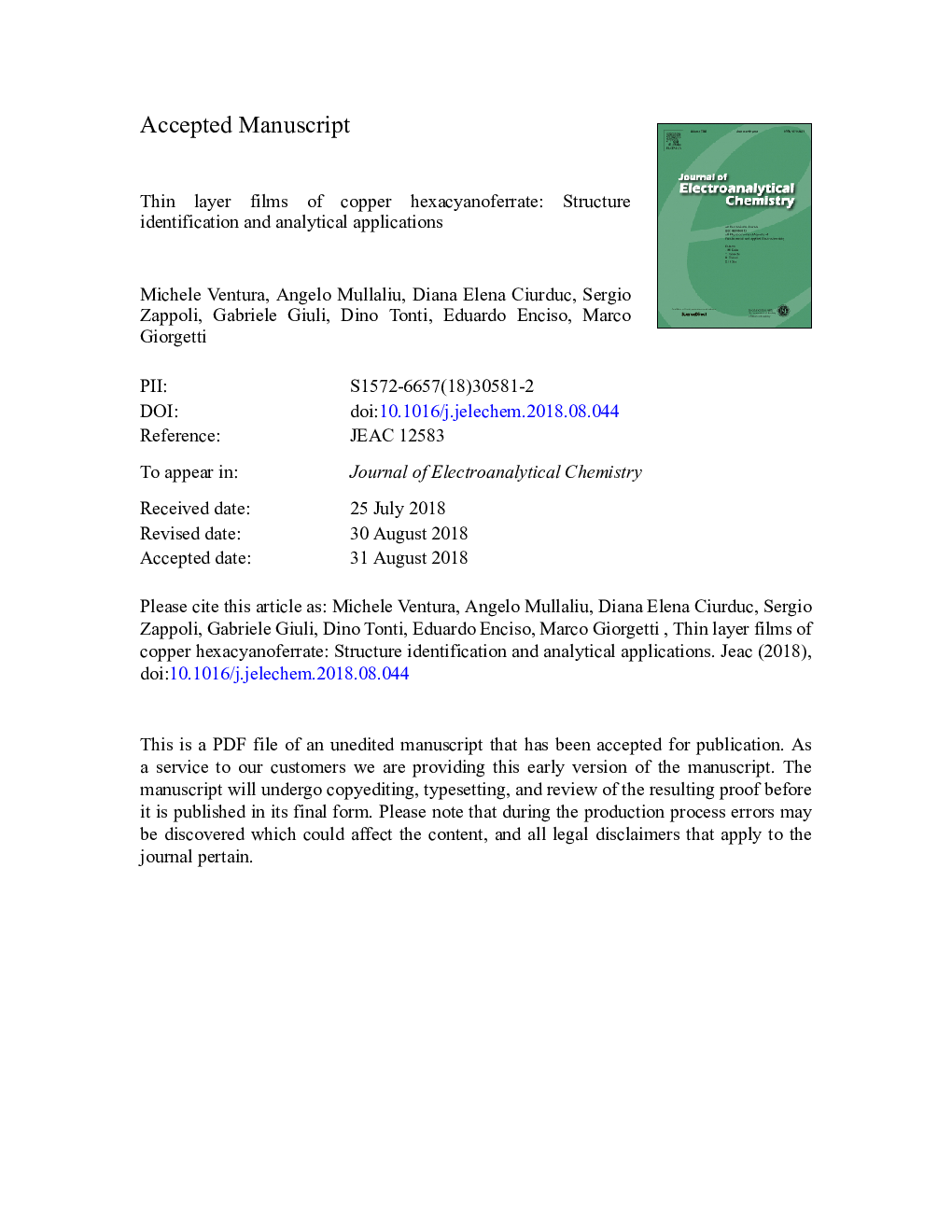| Article ID | Journal | Published Year | Pages | File Type |
|---|---|---|---|---|
| 8959880 | Journal of Electroanalytical Chemistry | 2018 | 35 Pages |
Abstract
Thin films of copper hexacyanoferrate (CuHCF) have been reproducibly electrodeposited on conductive substrates according to two different potentiostatic methods, here denoted as A and B. For both methods two consecutive steps are involved, the first being the electrodeposition of a thin Cu layer, the second its partial dissolution and formation of CuHCF in presence of hexacyanoferrate anion, giving as result a two layers film (CuHCF on Cu metal). The main difference, instead, consists in the applied potential values and their application times, featuring Method A lower potentials but longer processing times. Structural insights have been achieved by means of X-ray Diffraction (XRD) and X-ray Absorption Fine Structure (XAFS) measurements, from which we can deduce the presence of Prussian blue (PB) impurities in Method A, while Method B leads to a pure CuHCF phase. Two analytical applications have been considered, ion exchange and H2O2 sensing. Ion exchange has been first assayed and, although CuHCF-A shows a higher stability towards multivalent cations, CuHCF-B is suitable for small hydrated ions. PB impurities in CuHCF-A boost its sensing towards H2O2, making it more adapted to this employment.
Related Topics
Physical Sciences and Engineering
Chemical Engineering
Chemical Engineering (General)
Authors
Michele Ventura, Angelo Mullaliu, Diana Elena Ciurduc, Sergio Zappoli, Gabriele Giuli, Dino Tonti, Eduardo Enciso, Marco Giorgetti,
